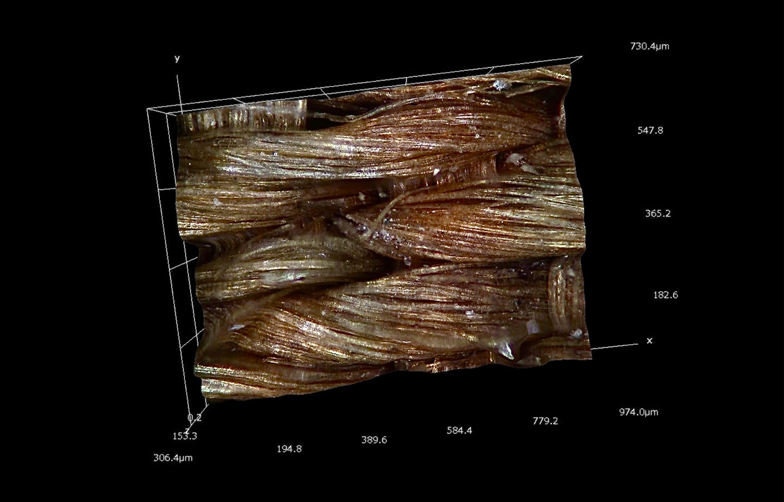
Reitzer Julia Claire
Combining design, digital technology and heritage materials sciences to renew the visitor experience of the textile collections at the museum.
Thesis under the supervision of James Auger (CRD), co-supervised by Loïc Bertrand (ENS Paris-Saclay, CNRS) and Christophe Leynadier (Entreprise Mihaly). Since October 2023.
Combining design, digital technology and heritage materials sciences to renew the visitor experience of the textile collections at the museum.
Abstract
Beyond the exhibition of objects and archives, scientists working on heritage objects can provide patrimonial narratives which aim to preserve and restore histories — this raises a question — how to create a consensus on what could and should be transmitted to future generations? Behind the installations on display, there are inevitably invisible or forgotten histories that relegate certain memories and cultural expressions to the shadows.
Material constraints also play a role in limiting the narrative potential of heritage artefacts. This factor is particularly problematic for textile collections which dyes and fabric are sensitive to degradation over long time-frames (for example, in archaeological contexts, or photodegradation in a museum environment), raising issues relating to the history of a textile in cases where what remains are simply fragments or archaeological remains. From a collection’s perspective two key challenges emerge:
1. How to present vulnerable materials whilst maintaining the stable conditions necessary to protect the artefact? This typically limits the potential of exposure through regulated lighting conditions (which can be at odds with the ideal situation for presentation) and other forms of sensory engagement with the artefact such as skin contact, odours and movement - these are currently non-existent.
2. How to infer other histories and richer forms of engagement with the artefact and what benefit can bring enhanced forms of facsimiles/production?
Textiles offer many experiences in everyday life. In our contemporary world, these experiences constitute fundamental aspects that the Design discipline explores. In this respect, we believe that Heritage and Design approaches should combine to address the challenges described above. Design can also be used to encourage dialogue and question existing perspectives, methods and practices. Through a practice-based design approach the project will address the following questions:
1. How can we discover what is in the shadows to expose the invisible elements of textile heritage?
2. How can we transform these absences into presence, to give substance to the stories that exist around the artefact? (whilst addressing the material constraints of the textile in the museum)
3. What place should be given to uncertainties and incompleteness in research? (frictions between Design and Heritage)
New approaches to textile exhibition will be explored through the development of an “alternative museum of textiles”. This alternative museum is a place for (A) incomplete objects-stories, or (B) those likely to be so in the future, creating a terrain that is conducive to imagination and speculation. The aim is to explore ways of probing and developing the space between informed speculation and historical facts built from scientific observations. To this end, strategies for informing these “possible” are being explored through the (re)interpretation of archives; the study and scientific characterization of the corpus in question; and with counterfactual history approaches in design and numerical simulation taking into account the kinetics of photodegradation.
The thesis project is co-sponsored by the Centre de recherche en design (CRD), Mihaly, a company specialising in the production of facsimiles with specific optical properties for museums, and the PPSM laboratory who brings expertise in imaging and the science of heritage materials.

Supervisor :
AUGER James (CRD), Centre de recherche en design (CRD), (ENS Paris-Saclay / ENSCi – Les Ateliers), ED SSH n°629 de l’Université Paris-Saclay à 50%.
Co-supervisor :
BERTRAND Loïc (25%), Laboratoire Photophysique et Photochimie Supramoléculaires et Macromoléculaires (PPSM), thème Patrimoine et matériaux anciens, (ENS Paris-Saclay / CNRS)
LEYNADIER Christophe (25%), entreprise Mihaly.
Financing method and sources :
Thèse financée pour 3 ans par Paris Région Île-de-France PhD 2023, avec le soutien du partenaire socio-économique Mihaly, via un contrat doctoral conclu avec l’ENS Paris-Saclay.
Thesis registration date : 2 octobre 2021.
Curriculum Vitae



